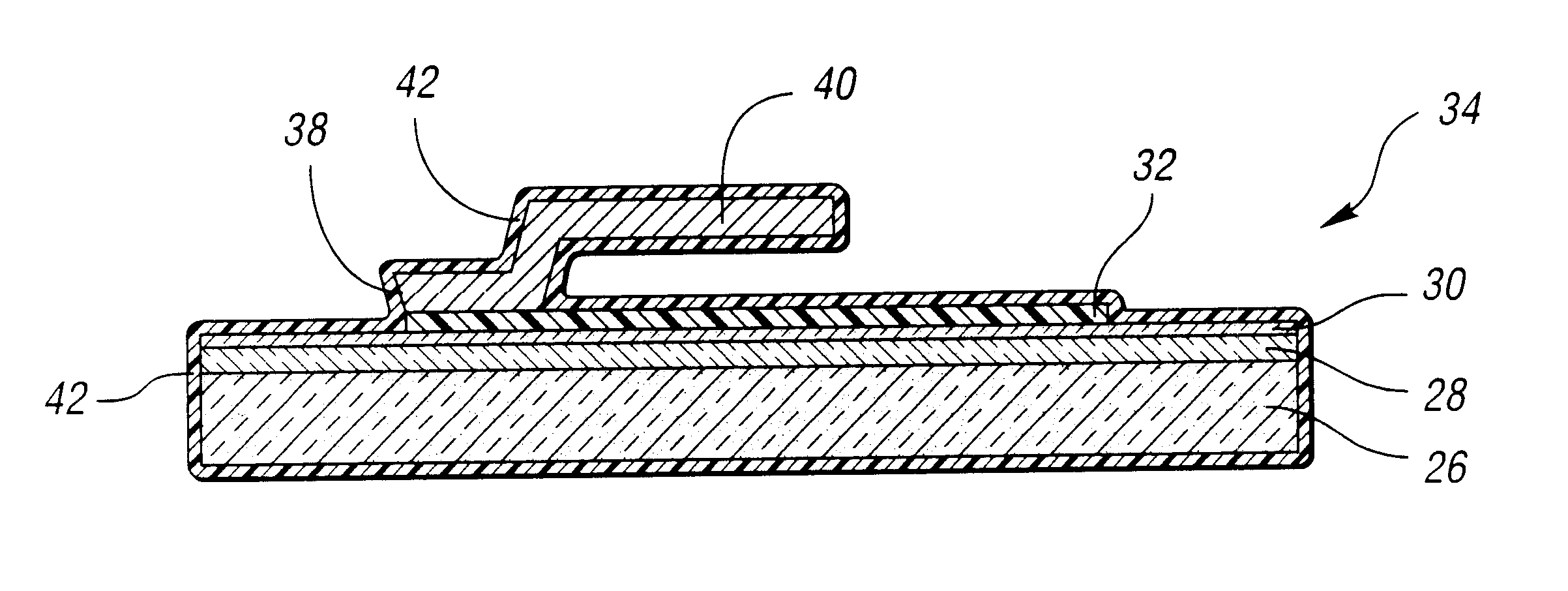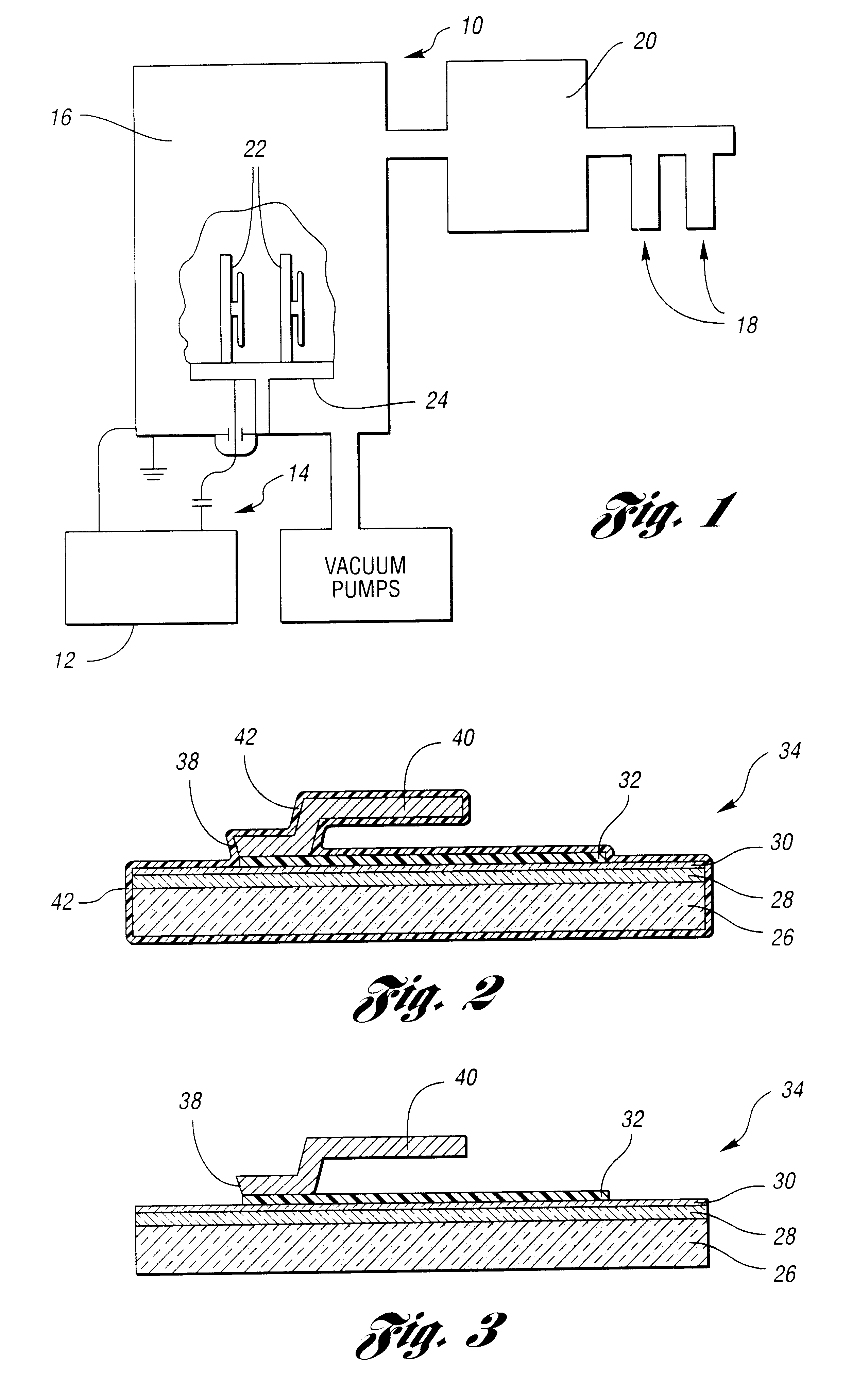Adhesion resistant micromachined structure and coating
a micromachined structure and adhesive technology, applied in the direction of fluid pressure measurement, fluid pressure measurement by electric/magnetic elements, instruments, etc., can solve the problems of direct impact on production yield and reliability of these devices, unwanted adhesion between adjacent elements, and failure of free-standing microstructures to the substrate, so as to prevent and reduce adhesion failure, prevent adhesion failure, and reduce adhesive forces
- Summary
- Abstract
- Description
- Claims
- Application Information
AI Technical Summary
Benefits of technology
Problems solved by technology
Method used
Image
Examples
example 1
Application of AHC as a Protective Coating on Micromachined Structures
In this example, AHC is used to coat a surface micromachined device 34, as depicted in FIG. 2, consisting of a substrate 26, a patterned polysilicon layer or bottom electrode 32, and a movable micromachined cantilever structure 40.
As illustrated in FIG. 4, a silicon wafer 26 is coated with an optional thermal silicon dioxide layer 28, which serves as a passivating layer, preferably having a thickness of 5000 Angstroms. While the substrate in this example is silicon, numerous other substrates function effectively. Possible substrates include, but are not limited to, quartz, glass, aluminum oxide and other such materials. A silicon nitride coating 30 is then applied to serve as a passivating layer onto the silicon substrate 26 or the silicon substrate 26 with a silicon dioxide layer 28. The silicon nitride layer 30 preferably has a thickness in the range of 500 Angstroms to 1500 Angstroms.
In the preferred embodiment...
example 2
Application of AHC as a Micromachined Structure
In this example, application of AHC is incorporated in a surface micromachining process to form a movable cantilever that is made of AHC.
The first three steps of this process consist of preparing a substrate 26, such as a silicon wafer with a silicon dioxide coating 28 and a silicon nitride coating 30, to provide two passivated coatings, depositing a patterned polysilicon layer 32, and depositing and patterning a sacrificial layer 36 made of PSG, which is described in detail in the section above and as shown in FIGS. 4-6.
As further depicted in FIG. 9, a release layer 44, such as a photoresist layer, is then spun on to the micromachined device 34, preferably having a thickness between one micrometer and six micrometers, followed by a photolithography step that defines the overlaying AHC coating. The release layer, most preferably a photolithography patterned photoresist layer, facilitates patterning of the AHC layer. With this preferred ...
PUM
| Property | Measurement | Unit |
|---|---|---|
| Electrical resistance | aaaaa | aaaaa |
| Adhesion strength | aaaaa | aaaaa |
Abstract
Description
Claims
Application Information
 Login to View More
Login to View More - R&D
- Intellectual Property
- Life Sciences
- Materials
- Tech Scout
- Unparalleled Data Quality
- Higher Quality Content
- 60% Fewer Hallucinations
Browse by: Latest US Patents, China's latest patents, Technical Efficacy Thesaurus, Application Domain, Technology Topic, Popular Technical Reports.
© 2025 PatSnap. All rights reserved.Legal|Privacy policy|Modern Slavery Act Transparency Statement|Sitemap|About US| Contact US: help@patsnap.com



